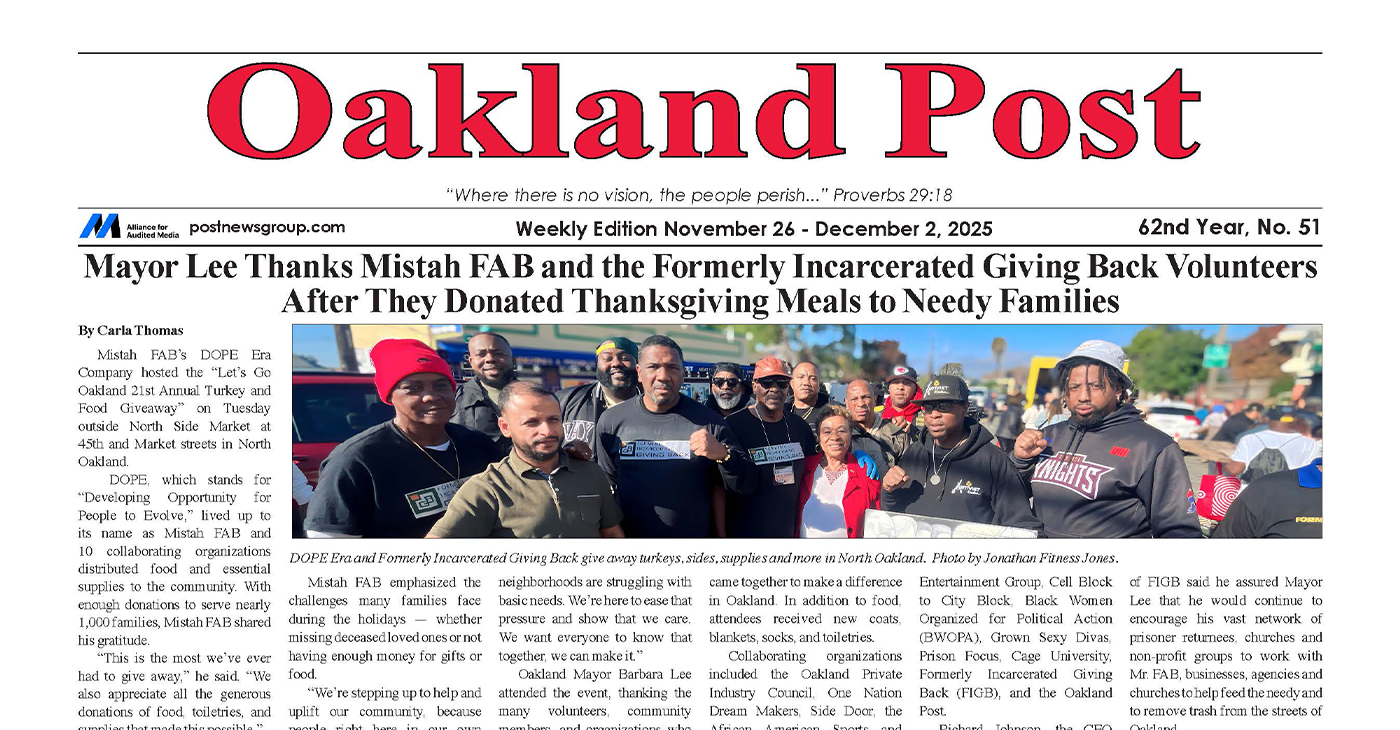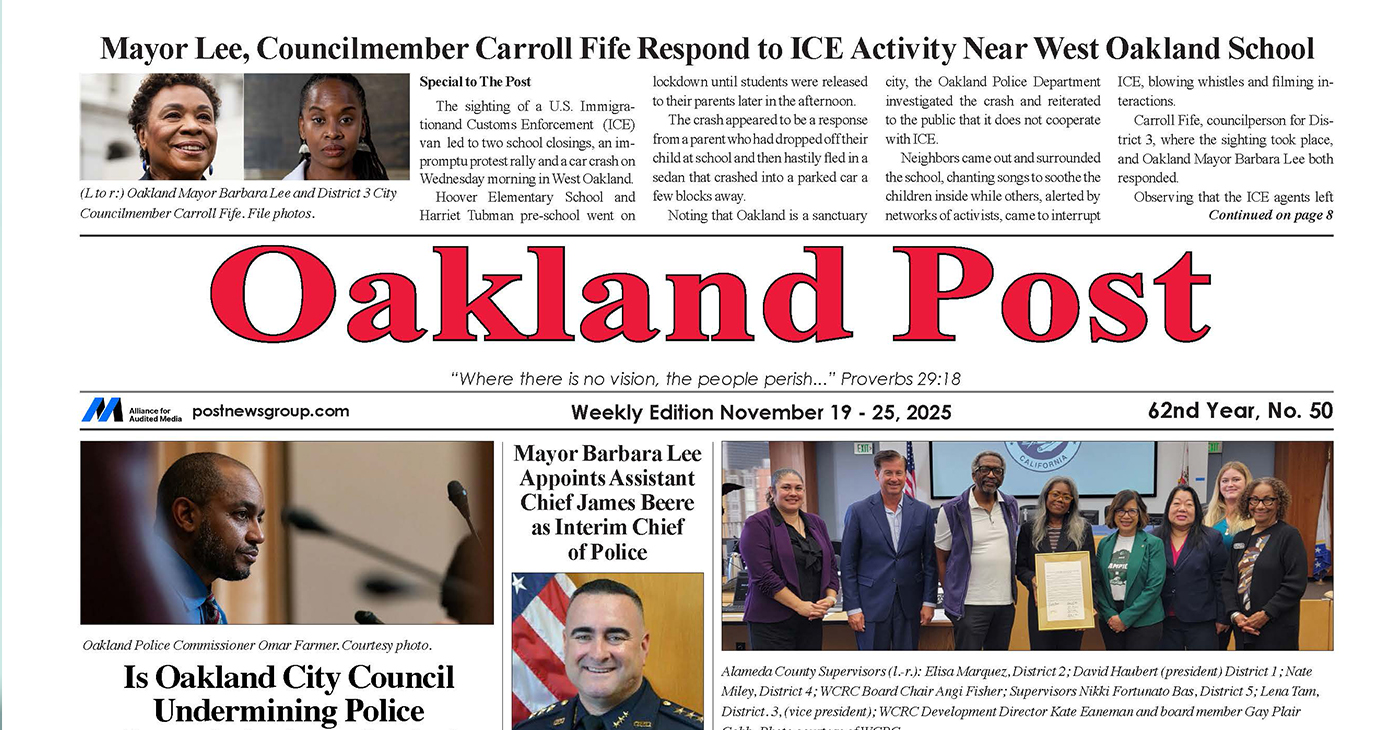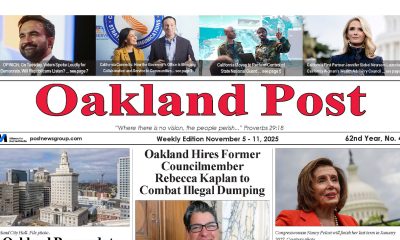Bay Area
School District Defends, Community Condemns Arrests of Parents and Teachers at School Board Meeting

The Board of Education and administration of the Oakland Unified School District (OUSD) are facing a barrage of public criticism after the arrest and injury of six parents and teachers who were protesting at the last school board meeting against the district’s unwillingness to reconsider plans to close or “consolidate” a large number of schools in the coming years.
School officials, speaking at a press conference the day after the arrests, defended the police action as necessary to protect board meetings from disruption to and reaffirmed their commitment to close schools in order to “right size” the district.
Parents and teachers have demonstrated at the previous two school board meetings, forcing the board to move its meetings to a private room without public access. The protests were against school closures that are taking place and the wave of closings that are planned in the next three years. Since 2003, the district has closed 18 schools, 14 of which have become charters. The district has already set up an official school committee to authorize the sale and lease of closed school properties.
Amid huge parent and student protests and a successful school boycott, Roots Academy was closed in early 2019. The board also recently voted to shut down the Kaiser Elementary School campus and Oakland SOL at the end of the 2019 school year. Members of the “Oakland Not for Sale” coalition were ready to commit civil disobedience.
When people arrived at the Oct. 23 board meeting, they saw the board on stage, 29 OUSD police and school security officers stretched in a line in front of the stage and a line of metal police barricades and a line of barricades in front of them. When some parents and teachers attempted to pass through the barricades, they were knocked to the ground and arrested. Some were injured. Five of the arrestees were taken to the OUSD police station at Cole Elementary in West Oakland, cited and released. The sixth arrestee, Kaiser Elementary parent Saru Jayaraman, was taken to a hospital for treatment, cited and released.
Jayaraman, standing on crutches and wearing a leg brace, spoke at a vigil of about 150 teachers and families at the district headquarters in downtown Oakland. There, they opposed school closures and the violent arrests of members of the school community.
“We have gone to three or four school board meetings…with musical instruments, with guitars, with song sheets … and our demands. Those are the weapons we have carried,” she said. And when we walked in on Wednesday with our guitar and our signs and our banners, we were faced with cops who had batons and guns metal barricades — at a public school board meeting with children present. So, I ask you — who is dangerous? The people with signs (who sang) “We shall overcome” or the police who have batons and guns and the school board that directed them to attack us?”
Speaking at the OUSD press conference, District spokesman John Sasaki said, “Going into (Wednesday) night’s meeting, we wanted to be prepared to prevent disruption from happening once again. In an abundance of caution, we decided to protect the Board of Education and staff and to protect the students. We set up a barricade and we had security.”
“Some people began to rush the barrier,” said Sasaki. “For those people on the dais, it wasn’t clear what the goal (of the protesters) was, but it was a highly charged moment. At that point we moved the meeting upstairs and continued. “
OUSD Police Chief Jeff Godown said, “They were there with full intention to commit the crime. You cannot commit the crime. You cannot shut down the meeting.”
Condemning the arrests, California Teachers Association President E. Toby Boyd issued a statement:
“CTA condemns the heinous acts of violence perpetuated Oct. 23 by OUSD police officers against Oakland parents, student and educators who were peacefully protesting proposed school closures. There is no room for these actions in our schools or anywhere in society. We hold responsible the OUSD and supt. Kyla Johnson-Trammell for creating the atmosphere that led to police officers wildly swinging batons at unarmed teachers, parents and student, causing physical injury and emotional distress.”
A statement by Justice 4 Oakland Students (J4OS), a coalition of students, families and teachers, said:
“Using barricades and police violence to silence community voices and harming young people is unacceptable…This is a travesty that the OUSD Board perpetuates and models this use of excessive policing.
“(J4OS) stands against … the OUSD police presence and force ordered by the OUSD Board of Education against students, parents, teachers, and community members who were there to participate in the democratic process, including non-violent protest and disruption. It is our right to speak out and express dissenting opinions and demands in a public forum without the fear of police repression. We demand that the Superintendent and School Board apologize for the barricade created at a pub We demand that you commit to no use of OUSD or OPD Police or barricades at Board Meetings.”
Alameda County
Seth Curry Makes Impressive Debut with the Golden State Warriors
Seth looked comfortable in his new uniform, seamlessly fitting into the Warriors’ offensive and defensive system. He finished the night with an impressive 14 points, becoming one of the team’s top scorers for the game. Seth’s points came in a variety of ways – floaters, spot-up three-pointers, mid-range jumpers, and a handful of aggressive drives that kept the Oklahoma City Thunder defense on its heels.

By Y’Anad Burrell
Tuesday night was anything but ordinary for fans in San Francisco as Seth Curry made his highly anticipated debut as a new member of the Golden State Warriors. Seth didn’t disappoint, delivering a performance that not only showcased his scoring ability but also demonstrated his added value to the team.
At 35, the 12-year NBA veteran on Monday signed a contract to play with the Warriors for the rest of the season.
Seth looked comfortable in his new uniform, seamlessly fitting into the Warriors’ offensive and defensive system. He finished the night with an impressive 14 points, becoming one of the team’s top scorers for the game. Seth’s points came in a variety of ways – floaters, spot-up three-pointers, mid-range jumpers, and a handful of aggressive drives that kept the Oklahoma City Thunder defense on its heels.
One of the most memorable moments of the evening came before Seth even scored his first points. As he checked into the game, the Chase Center erupted into applause, with fans rising to their feet to give the newest Warrior a standing ovation.
The crowd’s reaction was a testament not only to Seth’s reputation as a sharpshooter but also to the excitement he brings to the Warriors. It was clear that fans quickly embraced Seth as one of their own, eager to see what he could bring to the team’s championship aspirations.
Warriors’ superstar Steph Curry – Seth’s brother – did not play due to an injury. One could only imagine what it would be like if the Curry brothers were on the court together. Magic in the making.
Seth’s debut proved to be a turning point for the Warriors. Not only did he contribute on the scoreboard, but he also brought a sense of confidence and composure to the floor.
While their loss last night, OKC 124 – GSW 112, Seth’s impact was a game-changer and there’s more yet to come. Beyond statistics, it was clear that Seth’s presence elevated the team’s performance, giving the Warriors a new force as they look to make a deep playoff run.
Activism
Oakland Post: Week of November 26 – December 2, 2025
The printed Weekly Edition of the Oakland Post: Week of November 26 – December 2, 2025

To enlarge your view of this issue, use the slider, magnifying glass icon or full page icon in the lower right corner of the browser window.
Activism
Oakland Post: Week of November 19 – 25, 2025
The printed Weekly Edition of the Oakland Post: Week of November 19 – 25, 2025

To enlarge your view of this issue, use the slider, magnifying glass icon or full page icon in the lower right corner of the browser window.
-

 Activism3 weeks ago
Activism3 weeks agoOakland Post: Week of November 12 – 18, 2025
-

 Activism4 weeks ago
Activism4 weeks agoOakland Post: Week of November 5 – 11, 2025
-

 Activism2 weeks ago
Activism2 weeks agoIN MEMORIAM: William ‘Bill’ Patterson, 94
-

 Activism3 weeks ago
Activism3 weeks agoHow Charles R. Drew University Navigated More Than $20 Million in Fed Cuts – Still Prioritizing Students and Community Health
-

 Bay Area3 weeks ago
Bay Area3 weeks agoNo Justice in the Justice System
-

 #NNPA BlackPress3 weeks ago
#NNPA BlackPress3 weeks agoThe Perfumed Hand of Hypocrisy: Trump Hosted Former Terror Suspect While America Condemns a Muslim Mayor
-

 #NNPA BlackPress2 weeks ago
#NNPA BlackPress2 weeks agoTrump’s Death Threat Rhetoric Sends Nation into Crisis
-

 #NNPA BlackPress4 weeks ago
#NNPA BlackPress4 weeks agoProtecting Pedophiles: The GOP’s Warped Crusade Against Its Own Lies
























































